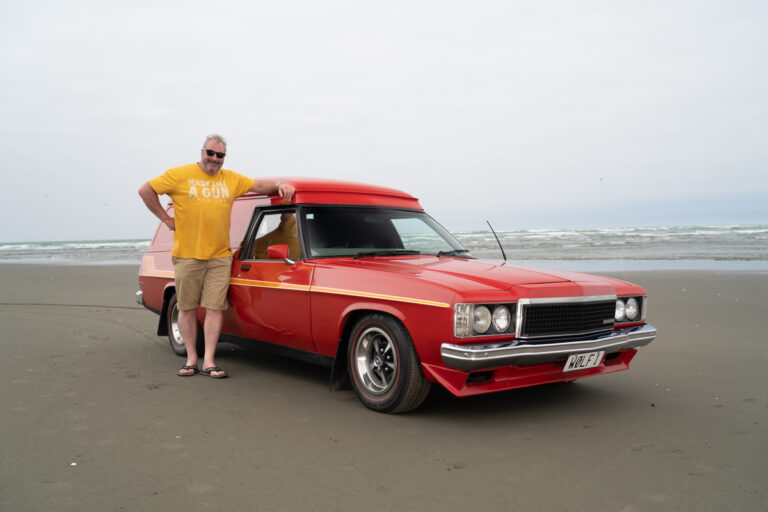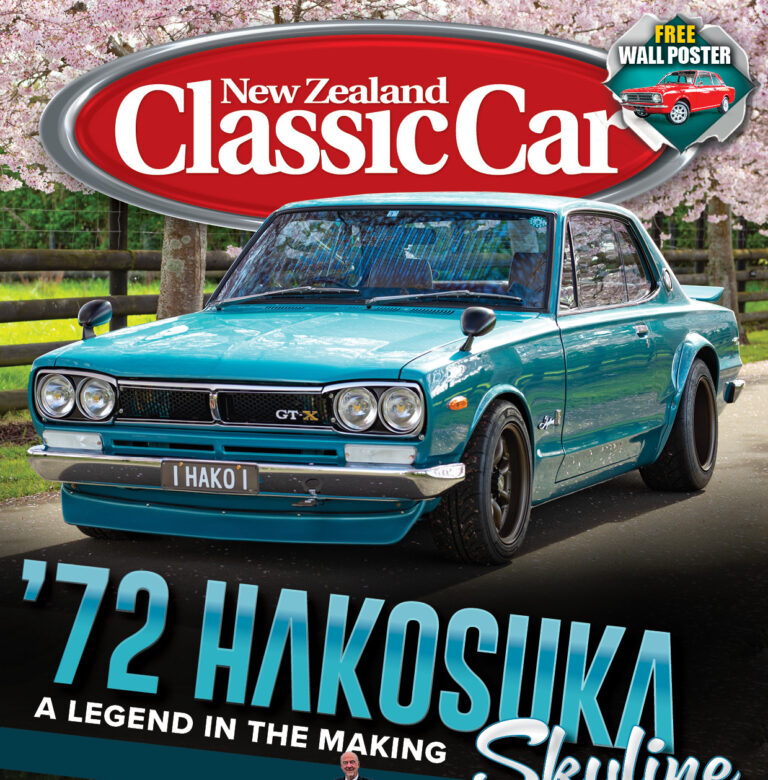Twilight sessions are back at Hampton Downs, a good opportunity to get in a few hours of testing, or simply smash out some some after-work laps. While there on assignment for an upcoming issue of NZ Performance Car, the unmistakable growl of a very raw, naturally aspirated boxer engine had me scouring the pits for the source.

What I found was slant-nose Porsche 911 (RSR replica), owned and driven by Alastair Russell. It’s been a few years between laps for the 911 (close to 12, Alastair tells me), but with the Porsche festival coming up in January, Alastair has blown off the cobwebs and “given the old girl a birthday”, and was out for a few shakedown laps.

Originally run in Super GT during the early 2000s, the slant-nose was still wearing its livery from its racing days at the pointy end of the field. What the grossly underpowered, naturally aspirated machine lacked in straight-line speed against the 900hp turbo cars of the era, it made up for in off-the-mark grip and corner speed.

Under the large-winged boot hatch lies a built 3000cc with a stack of modern technology making it howl. Although the distributor remains, it’s now not required thanks to the MoTeC engine management and coil conversion. EFI is also now taking charge of the fuelling. Compression was once well above 11.1, but as Alastair puts it, “it’s an old girl and they are just trying to make it last”, so the freshly built block’s compression is well below the 10s.

The cockpit is 100 per cent a GT racer, with Kevlar Racetech seats and that extensive roll cage. The wheels are period-correct three-piece Simmon FR17s wrapped in Bridgestone Potenza semi-slicks.

A MoTeC dash also takes the place of the gauges he would have once kept an eye on when chasing down the likes of ‘Racing Ray’ Williams.

Out on track is where the 911 really looked its best. That slant front is, to me, one of the coolest-looking fronts in racing. Especially the sprint version, which is devoid of the headlights that would occupy the lower corners of the bumper.

Sadly things didn’t go to plan for Alistair, with a seal blowing out of one of the throttle bodies, which was throwing off the tune. After using a bit of old-school tuning technique to diagnose, out came the laptop to crack into the MoTeC.

Although its competitive-racing career was left behind years ago, its great to see such a beautiful car returning to the track, complete with battles scars from its life as a door-to-door warrior. Good luck to Alistair for getting the car ready for January, it’s going to be great to see all these old girls going at it one more time.



